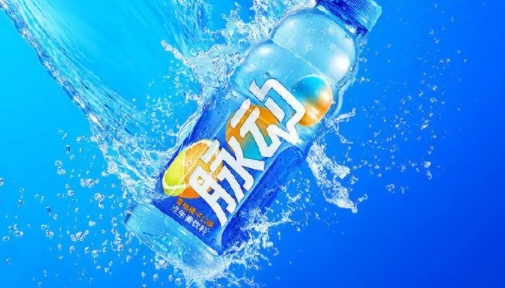If a company is a ship on a long voyage, patents, trademarks, and trade secrets are its compass, sail, and ballast.
• The compass points to the deep-water zones of technology.
• The sail catches the market winds.
• The ballast steadies brand reputation.
Today we’ll draw three IP maps—technology, market, and brand—step by step. Once finished, you’ll be able to pinpoint your coordinates on the competitive sea three-to-five years from now.
I. First Map: Technology Roadmap—Turn R&D Routes into Patent Lanes
1.1 From Tech to “Monopolizable Asset” in Three Steps:
Mine-sweep → Fence-in → Net-up
Think of it as “finding treasure and then digging a moat.”
Step 1 – Mine-sweep: Before project kickoff, run an AI patent landscape across the globe. Red-flag existing patents, green-light true white space.
Step 2 – Fence-in: The moment a technical highlight appears, file a provisional application and, under China’s 2024 rules, lock the “critical slice” with a partial-design patent so copycats can tweak everything except the vital part.
Step 3 – Net-up: Just before launch, ring-fence the core patent with a dozen improvement patents—layer after layer of fencing that rivals cannot bypass.
R&D-Stage Patent Moves & Pitfall Alerts
• Pre-launch: Global patent landscape with AI tools—avoid planting flowers in a minefield.
• During R&D: Provisional filing + partial design—lock the “most valuable puzzle piece.”
• Pre-launch: “Patent fence” (core + improvements + peripherals)—leave no gaps.
1.2 Case Study: CATL’s “Patent Route”
• Context: Before launching NCM 811 batteries in 2018, CATL found 200+ LG Chem patents in KR/US/DE.
• Moves:
-
Filed “811 cathode coating process” in China first to lock priority, then delayed examination.
-
Six months later entered US/EU/JP/KR via PCT and added 17 improvement patents (thermal valves, module frames).
-
From 2021, used its patent fence to countersue LG; ended in cross-licensing and a major North-American OEM order.
Take-away: A technology map is not a one-time filing; it’s a living route that you adjust in real time.
II. Second Map: Market Map—Turn Trademarks into Landing Coordinates
2.1 From Trademark to “Market Nail” in Three Steps:
Full-class sweep → Dual-track filing → Customs lock
Think of it as a beach-head plan:
Step 1 – Sweep all 45 classes like radar, spotting nails others have hammered in dark corners.
Step 2 – Dual-track filing: mature markets via Madrid Protocol, emerging markets via single-country filings—fast and cheap.
Step 3 – Customs lock: load the registration numbers into China Customs’ IP protection system; infringing containers trigger automatic detention.
Market Moves & Pitfall Alerts
• Choose the track: 45-class clearance—avoid discovering later that “×× Cat” is already taken in Class 35 (advertising).
• Storm the beach: Madrid + single-country combo—West via Madrid, Southeast Asia via single-country, low cost & high speed.
• Prevent infiltration: Customs recordation + crawler monitoring—containers seized at port.
2.2 Case Study: Genki Forest’s Trademark Blitz
• Context: In 2018 the Japanese “気” logo went viral; copycats such as “元気森林” flooded Pinduoduo.
• Moves:
-
Within two months, filed all 45 classes and Madrid applications for US/EU/Mexico/Indonesia.
-
AI crawlers daily scanned Pinduoduo, Shopee, Lazada, found 327 infringing links, one-click notarization.
-
After 2020 customs recordation, Shekou Port seized three containers worth ¥1.2 million—cutting off the counterfeiters’ lifeline.
Take-away: A market map is not “file and forget”; it’s “nail in real time.”
III. Third Map: Brand Map—Turn Trade Secrets into Emotional Anchors
3.1 From Brand to “User Memory” in Three Steps:
Formula lock → Co-brand lock → Exit lock
• Story first: lock core formulas or algorithms in a vault and turn them into brand legend.
• Co-brand smart: sign a triple lock—NDA, non-compete, reverse-engineering ban—before any collaboration.
• Prevent brain drain: real-time blockchain logs on employee laptops—every copy event is time-stamped and traceable.
Brand Moves & Pitfall Alerts
• Tell the story: tiered encryption for “secret sauce”—Atlanta-style vault for your cola recipe.
• Collaborate: trademark license + triple-lock agreement—NDA, non-compete, anti-reverse clause.
• Prevent leaks: exit audit + blockchain logs—Git history auto-backed up for one-click forensics.
3.2 Case Study: Heytea’s Brand Moat
• Context: 2021 Heytea × Fendi co-branded “yellow-cheese” recipe leaked by ex-employee.
• Moves:
-
Signed bilateral NDA restricting formula use to a closed workshop in Dongguan.
-
Exit audit caught ex-employee copying 200 R&D logs; blockchain timestamps locked the leak.
-
2022 Shenzhen court ordered ¥800,000 damages and public apology—co-brand buzz intact.
Take-away: A brand map is not “ad bombing”; it’s “emotional anchor + tech lock.”
IV. The Master Map: Overlay the Three into a Strategic Sandbox
Stack technology, market, and brand into a 3-D grid:
• X-axis: Tech depth (layers of patent fence)
• Y-axis: Market breadth (number of trademark countries)
• Z-axis: Brand height (irreplaceability of trade secret)
For every new product, plot a point:
• Tech point < 3 patent layers → dig deeper.
• Market point < 5 countries → file immediately.
• Brand point < emotional anchor → upgrade story or co-brand.
V. Conclusion: Every Line You Draw Today Is Tomorrow’s Moat
The tech map lets you fish in deep water.
The market map lets you plant flags on the shore.
The brand map makes users emotionally “dock.”
When the three maps merge into one strategic sandbox, competitors won’t see a mere “patent wall” in three years—they’ll see a fully lit IP city with towering ramparts, busy docks, and glowing lights.


